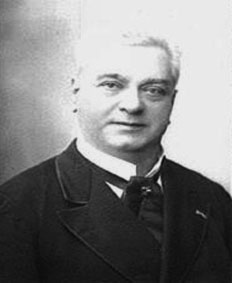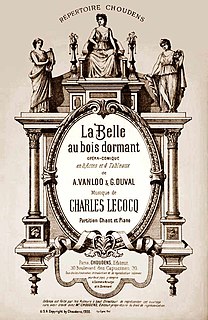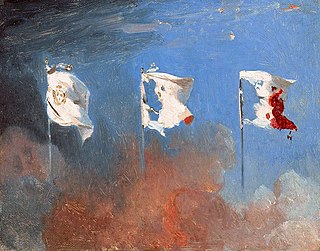
Henri Meilhac was a French dramatist and opera librettist.

La fille du tambour-major is an opéra comique in three acts, with music by Jacques Offenbach and words by Alfred Duru and Henri Chivot. It was one of the composer's last works, premiered less than a year before his death. It opened at the Théâtre des Folies-Dramatiques, Paris, on 13 December 1879, and, after a successful initial run, was frequently revived in Paris and internationally, but in recent times has not been among the Offenbach operas most frequently staged.
Maximilien-Nicolas Bouvet was a French operatic baritone.

Juliette-Joséphine Simon-Girard was a French soprano, principally in operetta. Her father, Philippe Lockroy, was an actor at the Comédie Française, and her mother was Caroline Girard, of the Opéra-Comique.

Nicolas-Marie Simon, known as Simon-Max, was a French tenor, mainly active in Paris in the field of opera-bouffe.

Marguerite Ugalde (1862–1940) was a French mezzo-soprano. She was the daughter of the singer and theatre manager Delphine Ugalde.

The Théâtre des Folies-Dramatiques was a theatre in Paris in the 19th and 20th centuries. Opened first in 1832 in the site of the old Théâtre de l'Ambigu-Comique on the Boulevard du Temple, under Frédérick Lemaître it became a noted venue for the genre of mélodrame.

Jules Brasseur was a French actor and singer, born 1829 in Paris and died in the same city in 1890, who achieved considerable popular success in Paris and around France in the second half of the 19th century.

Pierre-Paul-Désiré Siraudin was a French playwright and librettist.

Surcouf is a French opéra comique in three acts and a prologue, music by Robert Planquette, libretto by Henri Chivot and Alfred Duru, premiered on 6 October 1887 at the Théâtre des Folies-Dramatiques in Paris. It ran for a modestly successful 96 performances.
Antoine Banés, real name Antoine Anatole, was a French composer of operettas and ballets.

Alfred Duru was a 19th-century French playwright and operetta librettist who collaborated on more than 40 librettos for the leading French composers of operetta: Hervé, Offenbach, Lecocq and Audran.
Frédéric Barbier was a 19th-century French composer.

Maria Conchita Gélabert (1857–1922) was a lyrical artist and actress of Spanish origin who performed in France at the end of the 19th century.

Anna Van Ghell was a Belgian singer who starred in numerous operettas in Paris. She was called Anna Vanghel or Vanghell in France.

La Marjolaine is an opéra bouffe in three acts, with music by Charles Lecocq and words by Eugène Leterrier and Albert Vanloo, the third collaboration by the three. It opened at the Théâtre de la Renaissance, Paris on 3 February 1877 and had a fairly successful run of 117 performances. The work was staged in continental Europe, Britain and the Americas over the next few years.

La belle au bois dormant is an opéra comique in three acts with music by Charles Lecocq and words by Albert Vanloo and Georges Duval. It is a retelling, with modifications, of the fairy tale Sleeping Beauty. The princess wakes from her long sleep and falls in love not with Prince Charming but with his companion, but all is well in the end.




















